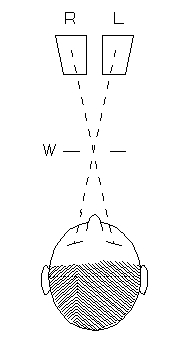
Wildlife photography in your backyard.
Digital Stereos for Cross-Eyed Viewing.
by Donald E. Simanek.
This page requires a monitor width of at least 1000 pixels in order to see both images for cross-eyed stereo viewing. Since the photos also have large vertical dimension, it helps to toggle the "full screen" view (F11 in Windows). However, if you haven't mastered that viewing method, these may also be appreciated as 2d flat photos. All are copyright by Donald Simanek. Most were taken with a homebuilt 3d digital camera attachment described in 3d Gallery Four.The project has resulted in two versions of the bugshooter attachment.
One uses 50mm lenses 9.5 mm apart and set for a short working distance, resulting in a field of view about 2 inches wide. This one has small apertures and uses the popup flash of the camera with ISO 400. The other has 40mm lenses and a longer working distance of about 10 inches. Typically the camera was set at ISO 200 in daylight, and sometimes supplemental flash was used from the camera's pop-up flash. The apertures of the camera attachment are fixed at about f:40, and the shutter speeds in daylight were about 1/100, allowing hand-held shots without flash.
For instructions on free-viewing 3d by the cross eyed method, see the How to View 3D page.
Many examples of stereo close-up photography can be found on the internet. Some of these, though impressively photographed, are not taken "in the wild", but are made in the studio with insects that have been refrigerated for a while to slow them down. It's a lot more challenging to go after them as they go about their daily activities in nature, with hand-held camera. The composition isn't always perfect, nor the poses, but they are natural.
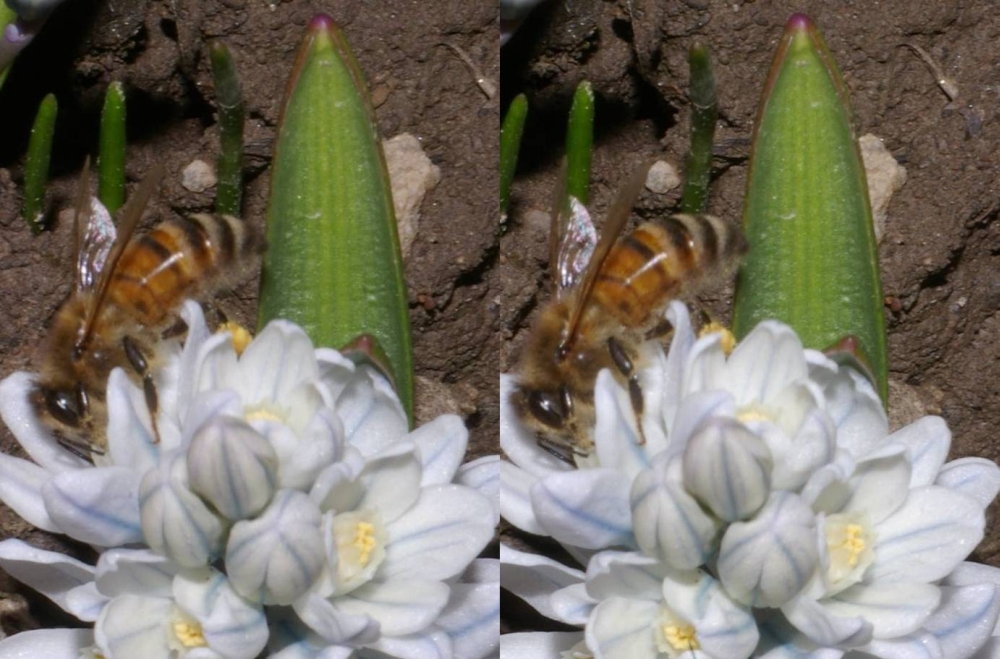
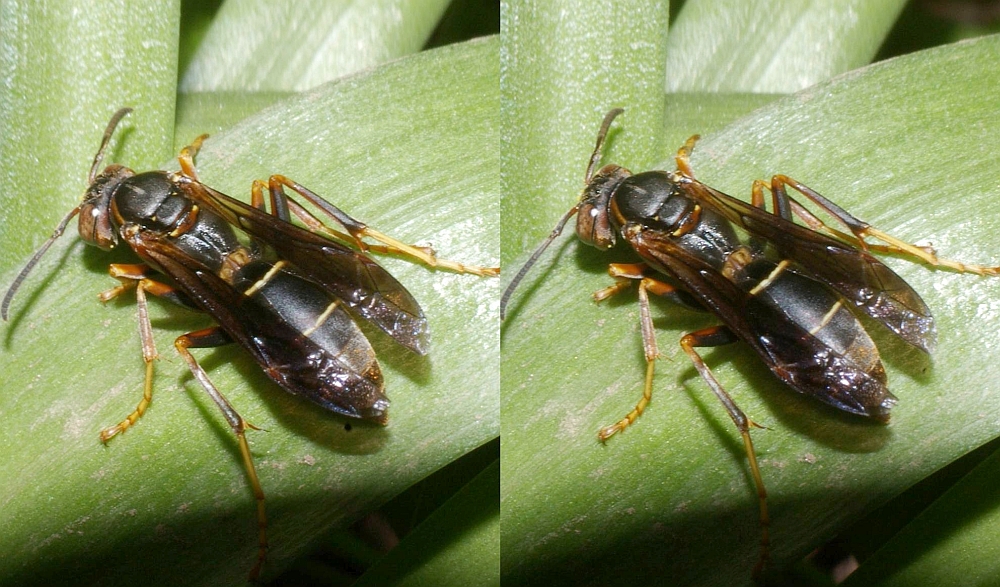
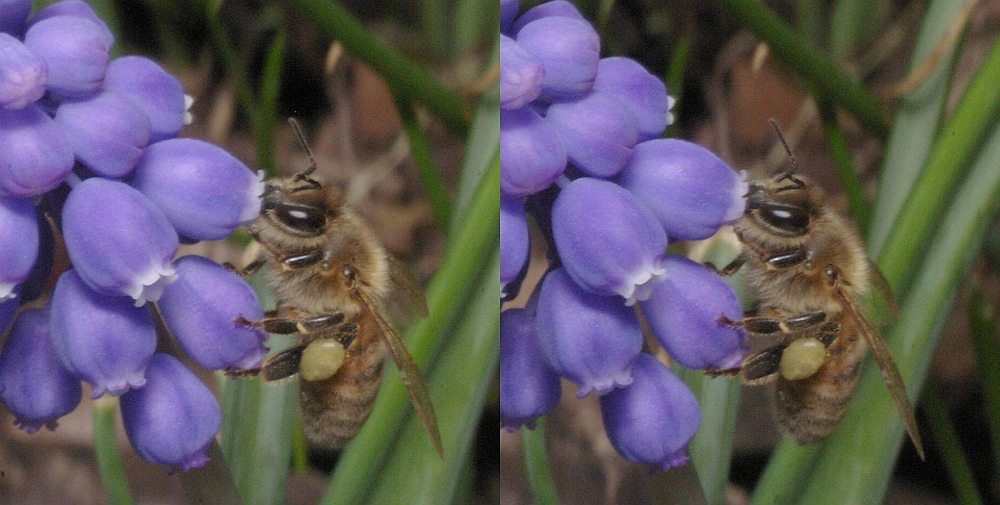
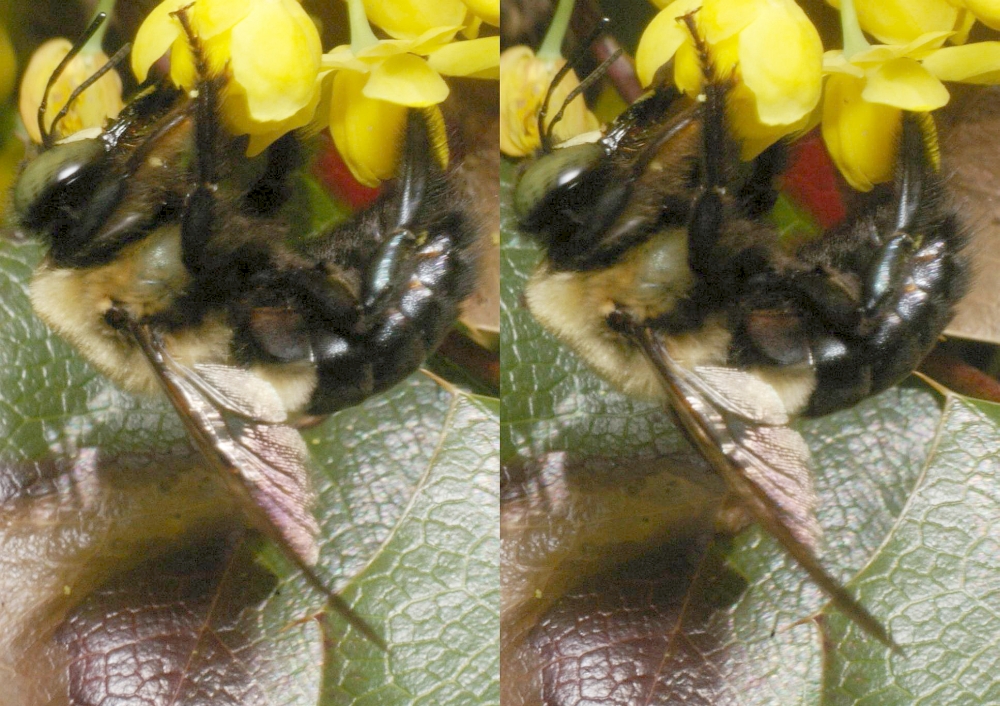
Bees of all kinds like holly bushes in bloom. On a warm and sunny day you can stand near the bush and have bees buzzing all around you, eager to have their photos taken. These bees are not aggressive if undisturbed while going about their business. The last two pictures were taken at ISO 800 at 8 inches distance from the lenses, with the camera's pop-up flash reflected from a white card.
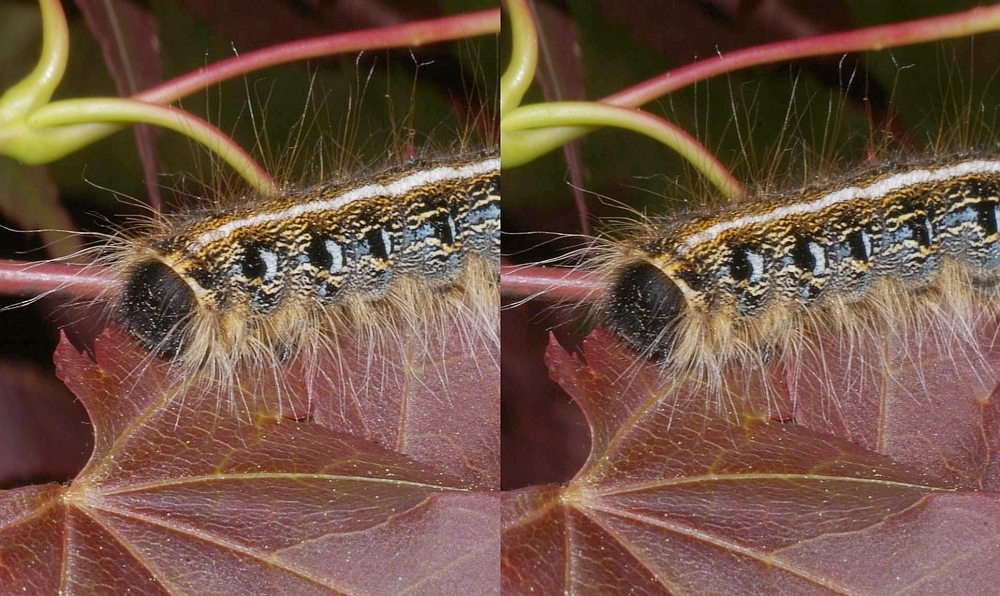
The last picture is "The Caterpillar That Ate My Japanese Maple." Though it was a good model, my wife insisted that its career be ended after this photo shoot. I'm told that it is the Eastern Tent Caterpillar Malacosoma Americanum.
To test the resolution and sharpness of this picture, I cropped it and enlarged a small portion.
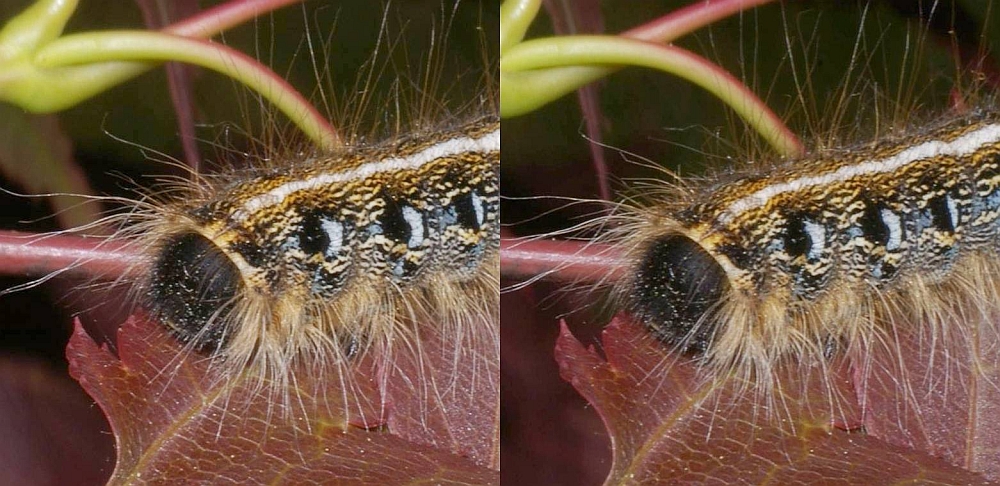
[Late July 2008] It's late july and the butterfly bushes are attracting butterflies, hummingbird moths and bees. All are elusive quarry, seeming to know when you are about to snap their picture. You have probably noticed that I like natural backgrounds, and don't mind if they are somewhat beyond the depth of field. Look in the very lower left corner and you will see a small fly that got into the picture. The lighting is from the reflector/diffuser unit described below, which gives a natural look without distracting shadows.
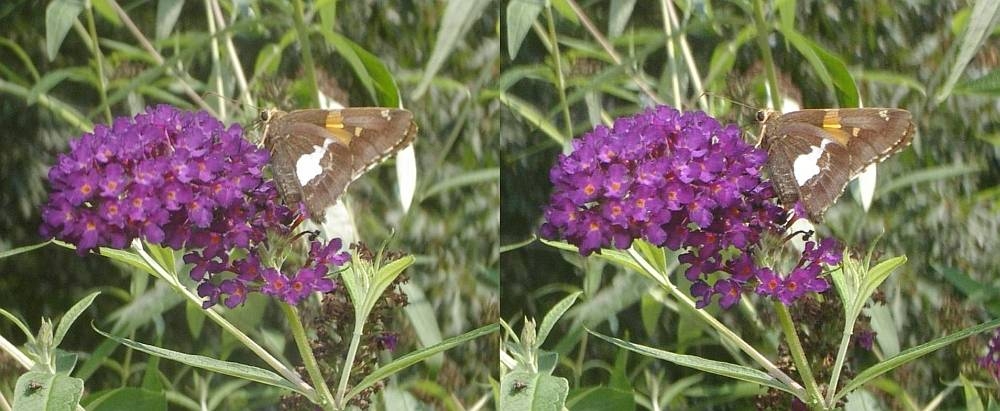
A couple of Sphinx Moths (commonly called hummingbird moths) have been frequenting these bushes. So far, this is the best shot I've gotten of this very elusive prey. They are so called because their small size, and their behavior is similar to that of humingbirds.
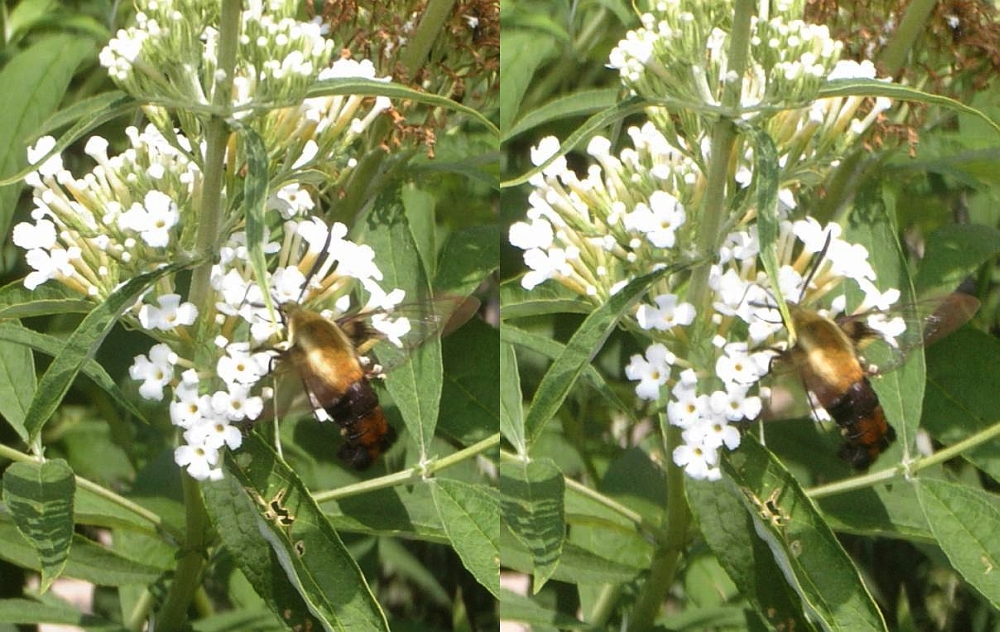

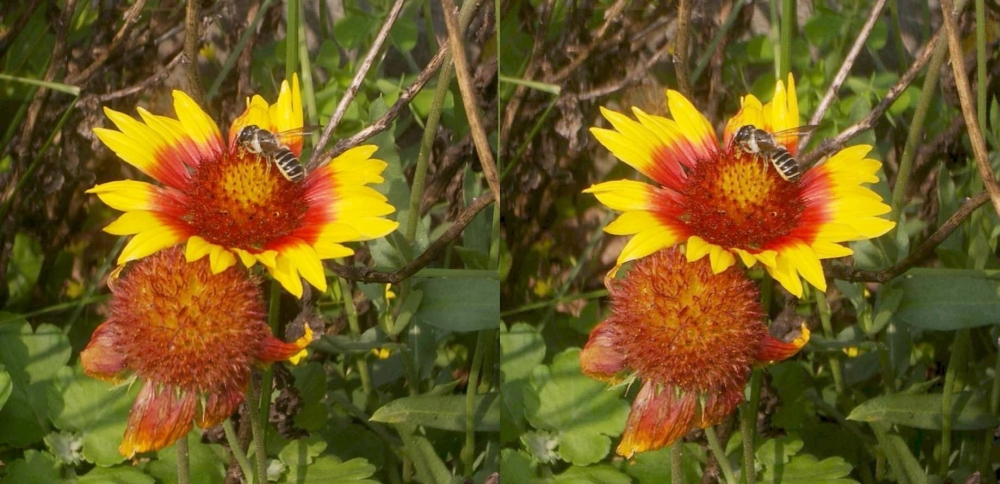
When there's no wildlife in your backyard, consider visiting a pet store. They may grant permission to photograph, so long as you don't annoy the animals or the other customers. The following four pictures were taken at Calico Creek Feed and Pet in Mill Hall, PA.
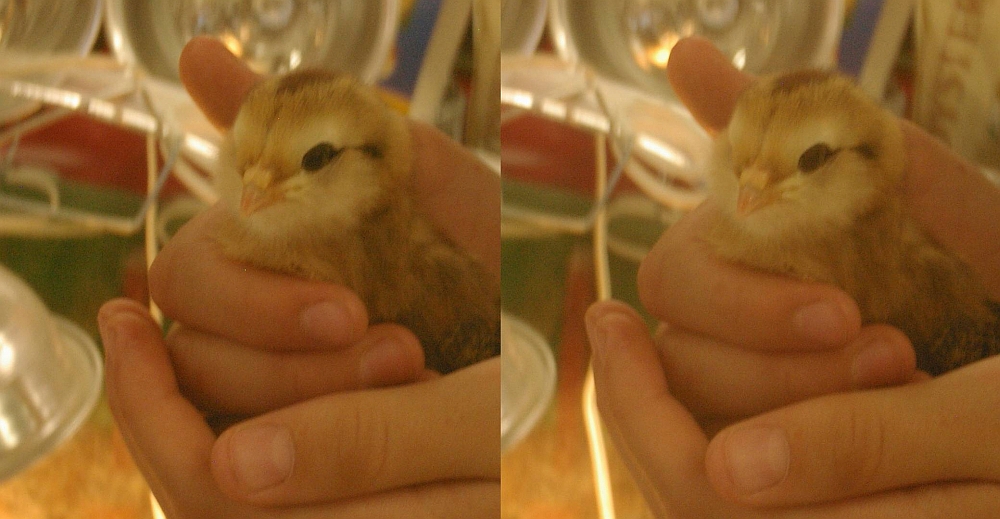

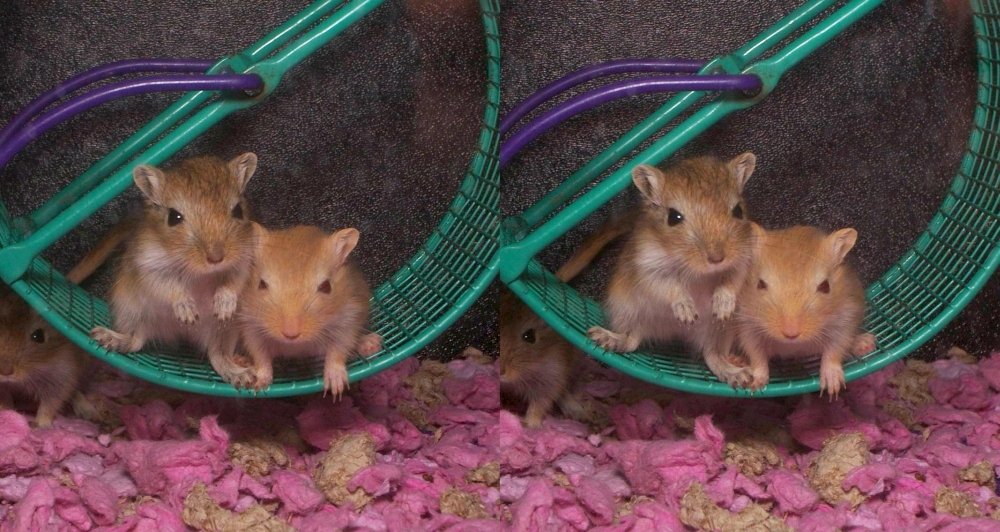
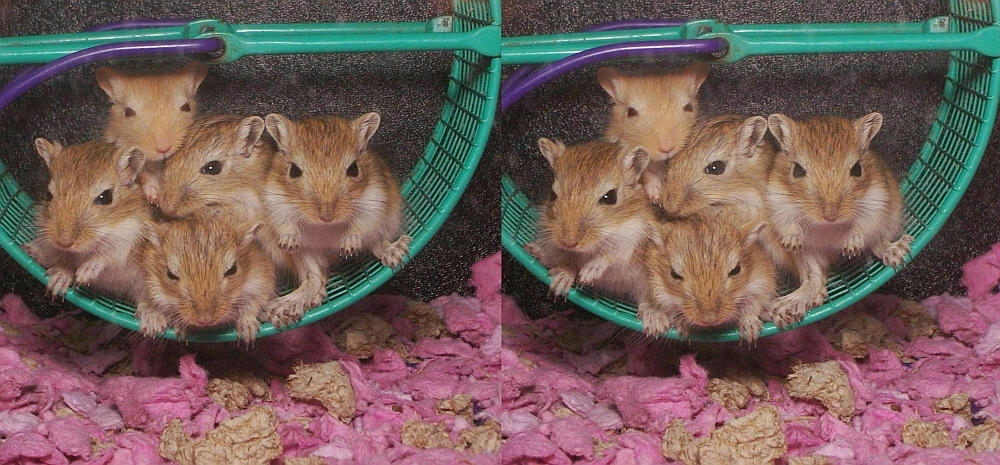
This last one might be titled "Say Cheese!" It is an example of the difficulty of getting group photographs of subjects, and then finding that one of them had his eyes closed. Here they seemed quite eager take a break from their workout on the exercise machine to pose for a family portrait.

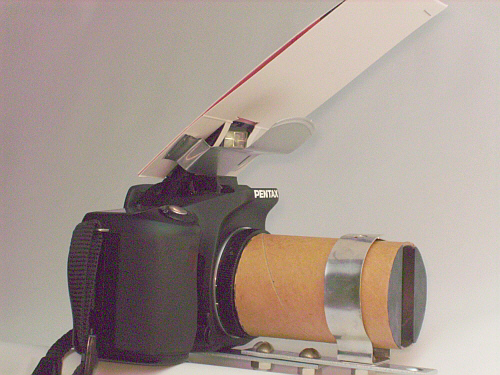 |
The bugshooter 3 has evolved. It has a shorter masking tube (4.25 inches) and a reflector for the popup flash, so that the cardboard tube does not cast a shadow onto the subject. The reflector also provides a broader effective source, located higher and forward of the flash lamp. It is made of white cardboard from candy boxes and an aluminum top from a peanut can. The aluminum redirects flash light up to the white cardboard, which scatters into a hemisphere. This gives softer, more natural-looking lighting.
All pictures on this page © 2008 by Donald E. Simanek.
More cross-eyed stereos in 3d Gallery One.
Still more, mostly taken with a digital camera in 3d Gallery Two.
Stereo view cards in 3d Gallery Three.
Home-built digital stereo close-up camera attachment 3d Gallery Four.
Review of the Loreo stereo attachment 3d Gallery Five.
Review of the Loreo macro adapter, 3d Gallery Five B
The Loreo stereo attachment—improved 3d Gallery Five C.
The Loreo LIAC attachment as a 3d macro device, 3d Gallery Five D.
A home-built digital stereo camera using mirrors 3d Gallery Seven.
Stereo close-up photography in your garden 3d Gallery Eight.
Stereo photography in your aquarium 3d Gallery Nine.
Stereo digital infrared photography 3d Gallery Ten.
Wider angle stereo with the Loreo LIAC 3d Gallery ll. A failed experiment.
Review of the Fuji FinePix Real 3D W1 camera 3d Gallery 12.
Macrophotography with the Fuji 3D camera. 3d Gallery13.
Panoramic stereo photography. 3d Gallery 14.
Tips for stereo photography with the Fuji 3d camera. 3d Gallery 15.
Mirror methods for stereo photography. 3d gallery 16.
The Fuji 3d macro adapter using mirrors, by Paul Turvill.
The Fuji 3d macro adapter with flash! 3d gallery 17.
Critters in stereo. 3d gallery 18
Wide angle stereo. 3d gallery 19.
Telephoto Stereo. 3d gallery 20.
2D to 3d Conversion. 3d gallery 21.
Stereos from outer space. 3d gallery 22.
Review of the Panasonic Lumix 3d digital camera. 3d gallery 23.
Reverberant flash for shadowless lighting.
Digital stereo photography tricks and effects.
Shifty methods for taking stereo pictures.
Stereoscopy with two synchronized cameras by Mike Andrus.
Guidelines for Stereo Composition.
Return to the the 3d and illusions page.
Return to Donald Simanek's front page.
—Donald E. Simanek